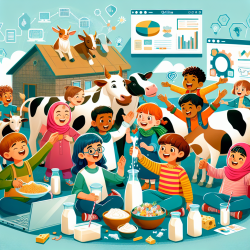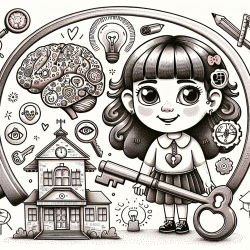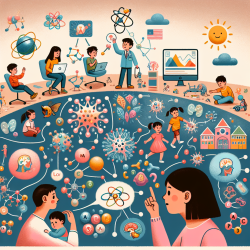Introduction
The COVID-19 pandemic has affected every aspect of life, especially in low- and middle-income countries (LMICs) like Nepal. A recent study titled "Dairy Animal Ownership and Household Milk Production Associated with Better Child and Family Diet in Rural Nepal during the COVID-19 Pandemic" highlights a crucial finding: owning dairy animals can significantly improve child and family nutrition during crises. This blog explores how practitioners can leverage these insights to enhance outcomes for children, particularly in speech-language pathology.
Understanding the Research
The study conducted in rural Nepal involved 309 families and 368 children aged 6-66 months. It aimed to assess the impact of dairy animal ownership on diet quality during the pandemic. The findings revealed that households owning dairy animals were more likely to consume milk and other animal-source foods (ASF), which are vital for child nutrition. Specifically, children in dairy-owning households were 2.88 times more likely to consume milk, and families were 5.81 times more likely to include milk in their diets.
Key Takeaways for Practitioners
As a practitioner focused on child outcomes, consider these key takeaways from the study:
- Promote Dairy Consumption: Encourage families to include dairy products in their diets, as they provide essential nutrients like calcium, vitamin A, and high-quality protein.
- Advocate for Dairy Animal Ownership: Support initiatives that promote dairy animal ownership in rural communities, as this can buffer diet quality during economic shocks.
- Leverage Data-Driven Insights: Use data from studies like this to inform your practice and advocate for policies that support child nutrition through sustainable agriculture.
Encouraging Further Research
While the study provides valuable insights, it also highlights the need for further research. Practitioners can contribute by exploring questions such as:
- How can dairy animal ownership be integrated into community-based nutrition programs?
- What are the long-term impacts of dairy consumption on child development, particularly in speech and language?
- How can technology, like online therapy platforms, support nutritional education and intervention in rural areas?
Conclusion
The research underscores the importance of dairy animal ownership in improving child and family nutrition during crises. By integrating these findings into practice, practitioners can play a pivotal role in enhancing child outcomes. For those interested in delving deeper into the research, the original study offers a wealth of data and insights.
To read the original research paper, please follow this link: Dairy Animal Ownership and Household Milk Production Associated with Better Child and Family Diet in Rural Nepal during the COVID-19 Pandemic.










